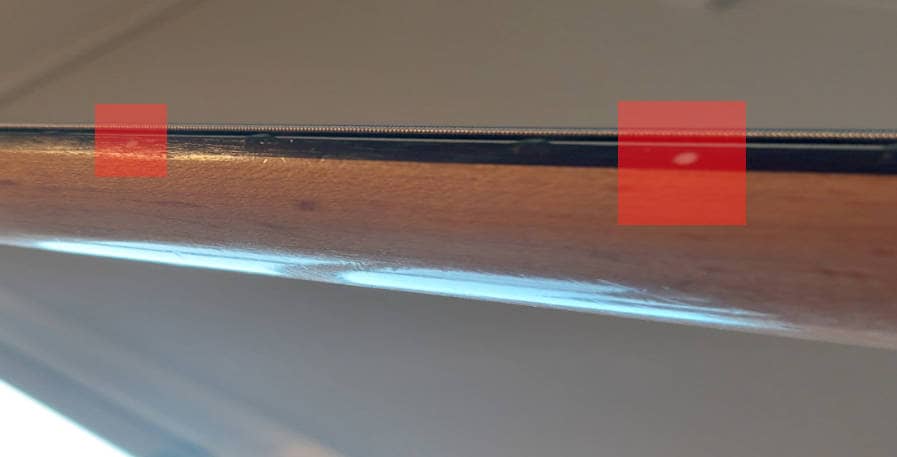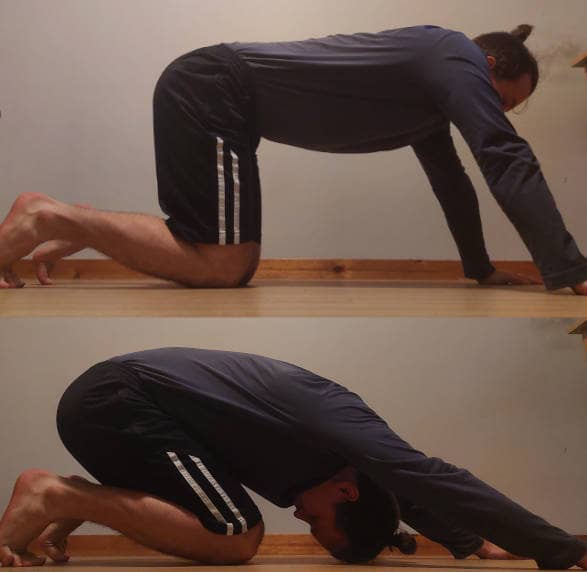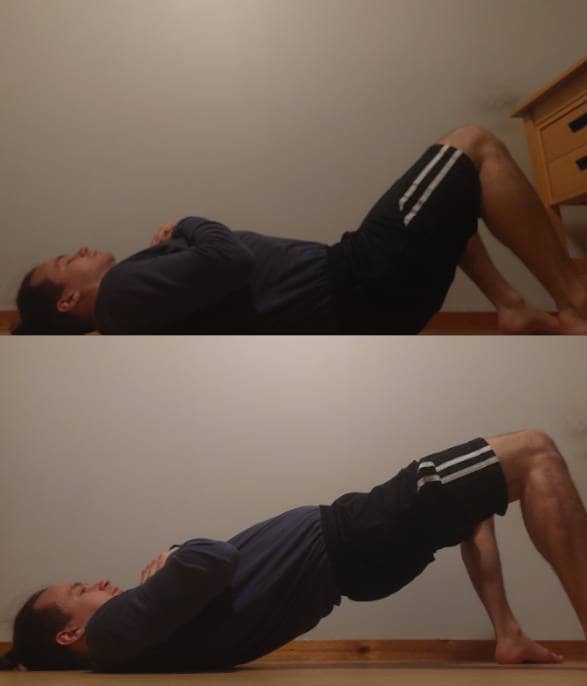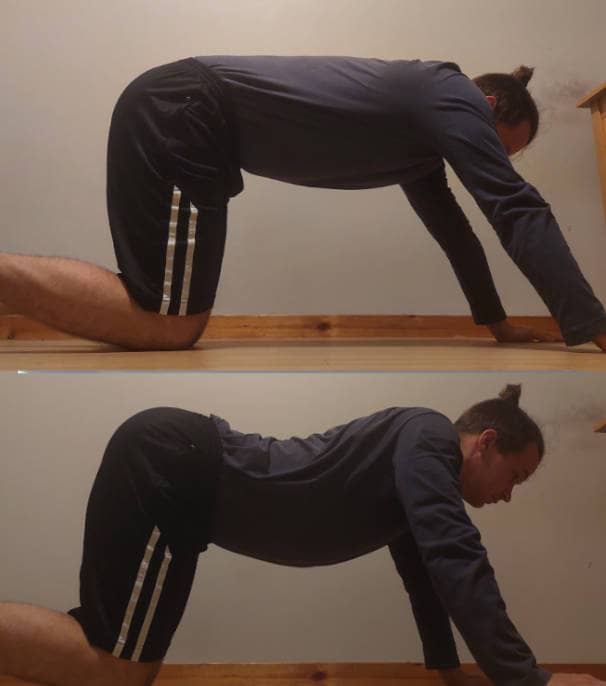While back pain from playing the bass can usually be prevented, it is something many of struggle with.
In my first couple of years of playing bass, back pain was a non-issue. Then it started to creep up on me, and I had to take some steps to mitigate it and prevent it from happening again.
Nowadays, it`s luckily not a problem anymore, and I`ve not had bass-related back pains for years now. Therefore, I`ve written this article so to show you some of the things that helped me, and that I`ve seen work for others.
Also, keep in mind that this is not medical advice. These are merely some tips for combating back pains. Consult with a doctor if you continue experiencing back pains or have experienced them for prolonged periods of time.
1. Fix your posture
Chances are good that if you are experiencing back pains from playing bass that the pains are at least partly caused by improper posture.
The most common mistake when it comes to posture is to hunch over the bass. I did this a lot when starting out, and it`s common for beginners to do so. This is because we have not yet developed proper control of the instrument, and we want to peek at the fretboard.
The issue is that playing in a hunched position for long periods of time can cause muscle pain, stiffness, and weakness. It can also reduce blood supply, and lead to wrist pains.
Thus, when playing the bass make sure to keep your back straight. What helped me do this, was to focus on pushing my chest out rather than thinking about keeping my back straight. This way, your back will naturally straighten, whereas trying to actively keeping it straight can feel awkward.
This holds true both when playing standing up or sitting. It will feel somewhat unnatural at first, but in time it will become second nature and greatly improve your comfort while playing.
2. Use the side dots
Fixing your posture is great, but the disadvantage of a straight back is that you won`t see your fretboard.
This is where the fret markers on the side of the bass come in. What`s great about them, is that they enable you to know which fret you are playing at without looking at the fretboard.

It can take a moment to get used to this if you tend to peek at the fretboard while playing. However, you will soon notice that the side dots give you all the same information as looking at the fretboard will give you.
In fact, knowing that the dots symbolize the 3rd, 5th, 7th, 9th, and 12th fret is enough to know exactly where your fingers are.
This is because there are never more than 2 frets between the dots. Thus, if you are playing on the 10th fret, you can quickly notice this by knowing you are 1 fret above the 9th fret by peeking at the side dots.
There are also some steps you can take to learn to play the bass without looking at all. This makes it even easier to keep your back straight, and is a natural next step after learning to use the side dots to navigate.
3. Adjust the strap height
Not only does bass strap height make a huge difference in how your bass feels to play. It also impacts how you naturally position yourself when playing, and how much strain the bass will put on your back.
Thus, depending on what strap height you are currently using, changing it could help alleviate back pains.
If you can do so without the bass becoming awkward to play, it can be helpful to raise the strap height. I`ve found the bass the most comfortable to play when I raise it almost all the way up to my chest. Not quite as high as Paul McCartney, but not far from it either.
This has multiple benefits. You will be less inclined to hunch your back, and the bass will not put as much strain on your back as it would when strung low. Personally, I`ve also found that this makes it more comfortable to play overall, which makes it easier to avoid tensing up while playing.
Lastly, it also helps to use a strap that feels comfortable and provides sufficient support.
My recommendation is this strap from Asmuse (Amazon Link). This is because it is thick (3.7″ or 9.4cm) which ensures that the weight of the bass is evenly distributed. It is also padded, which ensures that the bass strap rests comfortably against your shoulder.
4. Avoid tension
Tension is an effect of feeling stressed, and stress in the body can lead to a range of negative effects. One of these potential effectes is backaches. Tension can also make the bass harder to play, which is especially counterproductive when playing difficult parts.
To this day, I have a bad habit of tensing up when I`m concentrating on a difficult part. I tend to do this because I`ll start holding my breath, but I`ve also seen other bassists do the opposite and start breathing faster.
Thus, aim to breathe with depth and control while playing.
By being mindful of your breath you can notice whether you are tensing up or not. This also makes it easier to prevent tensing up in the first place.
Similar to your breath, also pay attention to your shoulders. Try to keep your shoulders relaxed, and whether you have a tendency to tense up in them or not. Similar to your breath, pay extra attention to your shoulders while playing difficult bass lines.
5. Stretch
Stretching decreases the chance of back injuries. Thus, it can be beneficial to do some stretches if your back has started to hurt, or even prior to it happening to prevent back pains altogether.
Alternatively, you can also opt to do Yoga to mitigate and help with back pain. This is a great option, as in addition to stretching Yoga helps you deal with stress, which can be a cause of the pain, to begin with.
Here are some stretches that I`ve found helpful that target the back specifically. Make sure to control your breathing and take deep breaths as you do all of them.
- Child Pose – Kneel down with your hands, knees, and feet on the floor. Pull your body backward so that your stomach touches your upper thighs. Hold the pose for as long as a minute if you are able.

- Bridge Pose – Lie on your back with your knees raised up and feet on the floor. Then, raise your hips up and hold the position for about 10 seconds. Aim for 8 repetitions, or as many as you find comfortable if 8 is too many.

- Cat/Cow – Kneel down with your hands, knees, and feet on the floor. Then, arch your back and hold the position for about 10 seconds. Aim for 8 repetitions, or as many as you find comfortable if 8 is too many.

If you find any of these stretches painful or uncomfortable, don`t do them. These merely worked well for me, and there are many other back stretches you can substitute them with.
6. Take breaks
When you practice the bass, it`s best to not play for exesively long stretches at a time. There are several reasons for this, with the prevention of back pains being one of them.
You do however want to practice for long enough for the session to be fruitful. Thus, for a good balance between efficiency and pain mitigation, aim to practice for 30 to 60 minutes.
If you want to continue playing, the break doesn`t need to be more than 10 to 15 minutes. During it, put your bass down and walk around for a bit or do some stretches.
In time you can opt to increase the length of the sessions if you no longer notice any back pain. It is best to do so moderately and slowly and to continue taking breaks or shortening down sessions if you notice the back pain returning.
Either way, it`s inefficient to practice bass for longer stretches of time, rather than spread your practice out over moderate sessions. Thus, don`t feel like you are missing out on practicing by taking breaks.
I never practice for more than 1-2 hours at a time, and this is after building up stamina and not having had back pains for years. If I were to get back pains now, I would take a break or two during these sessions and shorten them accordingly if needed.
7. Ensure the bass is well balanced
If your bass rests naturally against your body and the neck remains at an easily playable angle when not touching it, your bass is well-balanced.
If this is not the case, your bass might have neck dive. This means that the neck dips below an angle that feels natural to play, and thus needs to be held up constantly.
As a result, the weight of the bass will be unevenly balanced, which can be bad for your back. This can also lead to more strain, as holding the bass up can be cumbersome and make it harder to play overall.
Thus, if this applies to you, it is best to fix the neck dive on your bass. Not only will this be good for your back, but also for the overall playability and comfort of your instrument.
8. Play a lighter bass
The dimensions of a bass guitar can differ greatly.
For example, 5 and 6-string basses made out of dense wood types, can often weigh 5kg+(11lb+). On the other hand, basses with small bodies and no headstock tend to weigh around 3kg (6.6lb).
Thus, while the weight of a bass will rarley cause back pains on its own, it can be a contributing factor. Especially so if you play for long periods of time while standing or with improper posture and tensed shoulders.
With that said, back pains can often be solved with the other tips in this article, or might not be solvable without speaking to a doctor. Thus, unless you have easy acess to a lighter bass, it is not a solution I would recommend for msot bassists.
However, for bassists who suffer from prolonged or diagnosed back pains, playing a lighter bass can be a great long-term solution.
Some great options then are to play a short-scale bass made out of light wood material, or a headless bass.
Conclusion
The good news about back pains from playing the bass is that it often has a simple cause and a simple solution.
Fixing your posture will often take care of it, especially so if you can also avoid tensing up while playing. By utilizing a fitting strap height and playing a well-balanced bass that isn`t too heavy, you will generally be okay.
However, back pains can also be caused by non-bass related issues.
Among other things, back pains can be caused by ankylosing spondylitis, a slipped disc, or a pulled muscle. In cases like these, the above solutions can still be helpful but are in no way a substitute for visiting a doctor.
Thus, my recommendation is to make use of the above tips whether or not you are currently experiencing back pains. They will help to both mitigate and prevent the most common forms of back pain for bass players.
If you still experience back pains after applying these tips for a week or two, I recommend consulting with a doctor.

